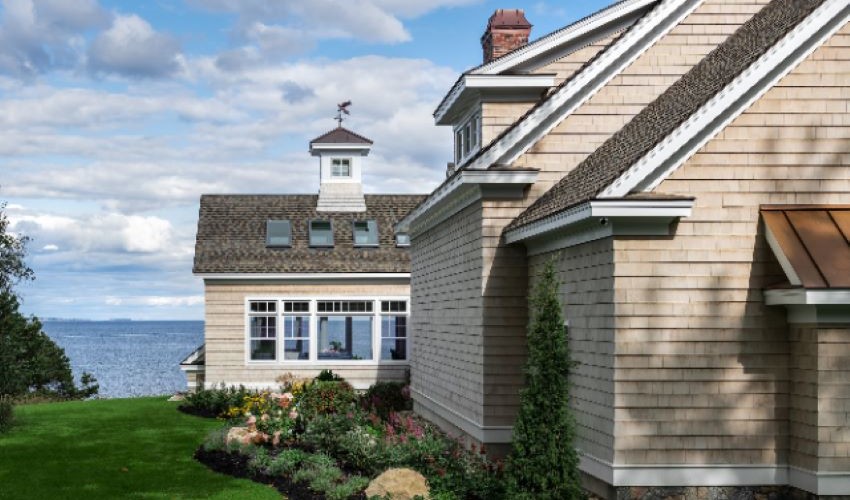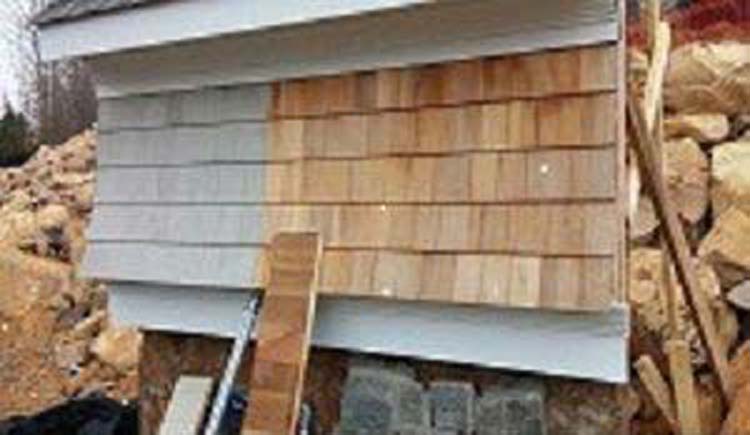Bleaching Oil for Cedar Siding

I was on a job site the other day and we were reviewing the transformation that occurs when you apply bleaching oil with stain to cedar siding. The contractor had already built a sample wall and we were discussing the finishing process. He indicated the siding would be stained, and then stained again six weeks later. I said I didn’t remember that being the way it should go, so I checked with the manufacturer, Cabot, and found that re-staining is not recommended, and can cause other problems, such as cracking of the wood and uneven color.
Clean the Wood First
After the siding is installed, it should be cleaned with “Problem Solver Wood Cleaner” (also made by Cabot). That will remove any bacteria or mold that may have accumulated while the cedar was stacked up in storage can be destroyed and removed. Once the wood has dried, the bleaching oil is applied. The stain within the oil tints the wood and then allows the wood to age gracefully in a uniform shade.
The entire process from application to the final driftwood grey look can take a good amount of time. But in a few months, the stain to settle into its long-term appearance. Some stains are clear, some are tinted.
Warning – the pigment in the stain can settle quickly in the paint bucket.
The stain must be continuously stirred to keep the pigment suspended in the oil to ensure the application of the coloring is fairly uniform. Anything less than continuous stirring will result in a diluted and uneven finish.

Not Your Typical Stain
Bleaching oil is a unique stain. It includes a grey pigment within the mix. The color gives the cedar a color similar to what it will ultimately become. The rest of the mix is made of chemicals that accelerate the natural weathering of the wood toward its driftwood color it would eventually become if left untreated and out in the weather and sunshine. In about six months, the initial stain fades away and the bleaching takes over.
A Beautiful Finished Appearance
In theory, once bleached, cedar shingle siding will need no future treatment. In reality, it will need some occasional touching up, particularly on the north side of the house where mildew is prone to grow. Bleaching oils used to contain chemicals to prevent mildew growth, but those chemicals were hazardous and environmental problems, so they were banned. The newer stains and bleaching oils are not as effective at stopping mildew. Nevertheless, bleaching oil on cedar shingles is the authentic way to get the look of the Shingle Style houses of the New England coastline and the Hamptons mansions.
I hope this information is helpful to you. You might want to get yourself a copy of my best-seller, Designing Your Perfect House. It is chockfull of valuable tips and advice that will save you many times the cost of the book on your house building or remodeling project. You might also like The Well-Centered Home: Simple Steps to Increase Mindfulness, Self-Awareness, and Happiness Where You Live. It will show you how to make your home a happy place.

